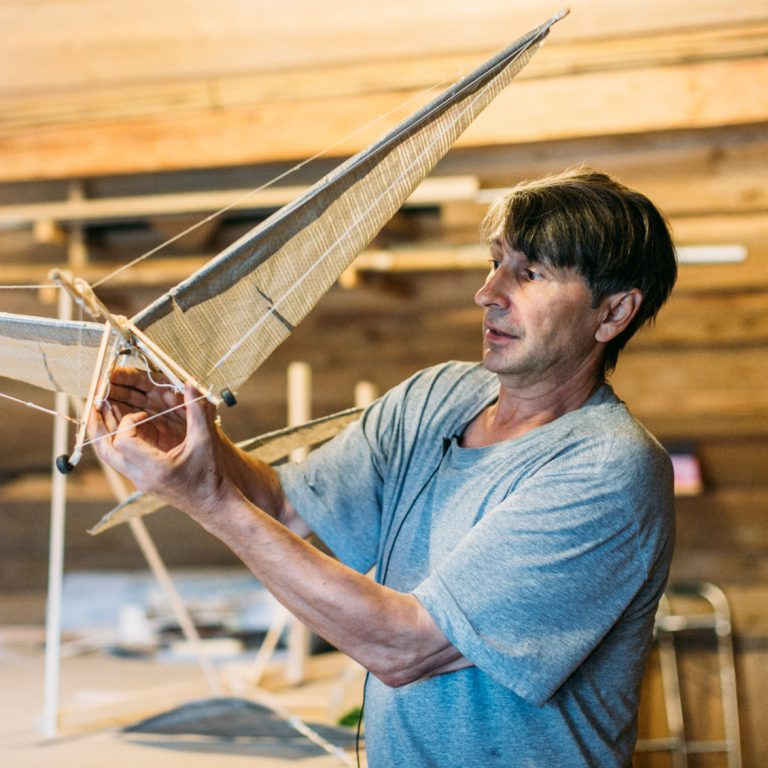Plenty of people dream about having a superpower — for instance, being able to fly like a bird. But hardly anyone is ready to make the mental and the physical effort or to invest the money and the time. Volodymyr Yakovenko, an aspiring inventor, lives in the Carpathian village of Iltsi. For over thirty years, he has been studying, modelling, building and testing his own ornithopter — an invention that was first conceived some five hundred years ago, but is yet to be implemented successfully.
From ancient times, people have been occupied with the idea of flying. Ancient Greek mythology tells a story of Daedalus, a gifted inventor who devised two sets of wings for his son Icarus and himself to escape from the island of Crete.
While jet propulsion still lay far beyond the horizon, inventors were brainstorming ways to apply raw human strength and replicate the prototypes found in nature — namely the wings of birds and insects.
A jet plane
Аn aircraft driven by an air-feed jet engine. Jet aircraft are used broadly in modern military and civil aviation.
An aircraft driven by its pilot’s strength is called a human-powered aircraft. These machines also referred to as foot-launched aircraft, can come in different shapes and types. However, the one that resembles the actual flying shape associated with living creatures is called an ornithopter (Greek órnis stands for “bird”, and pterón means “wing”).
The concept of an ornithopter is attributed to Leonardo da Vinci, an Italian artist and scholar who lived during the Renaissance. He occupied himself with flying devices for over 40 years. Various sketches devised by Leonardo, entitled “ornitottero”, have been preserved until now.
Some of those sketches depict a person about to take off using mechanisms connected to the wings, whereas others demonstrate propulsion generated by a more advanced rotor system. There are also sketches of a person standing upright on top of an aircraft and pressing levers using both hands and feet.

Current challenges
Even though modern aircraft are capable of carrying heavy cargo over thousands of kilometers, it is still a significant challenge to design and test an efficient ornithopter.
Due to the difference in body structure, humans generate a different lift component to birds. Only heavyweight athletes, whose weight exceeds the generated lift power, not taking into account the aircraft weight, are capable of reaching the threshold power values. If a 75 kg person was able to generate threshold power, they would fly a 15 kg aircraft powered only by traction, but such flight would last a couple of seconds only.
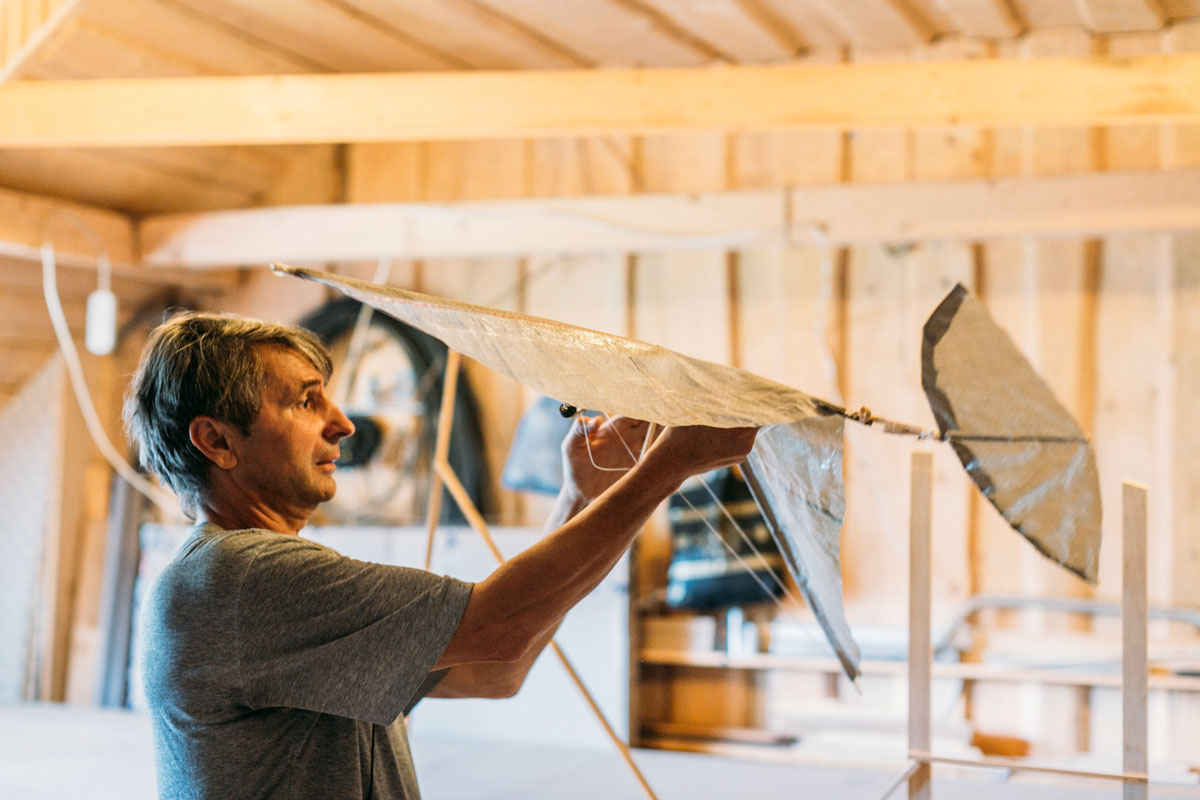
Besides, bird flight is a multi-faceted and complex process which has considerably evolved over time. The right wing beat requires precision in every detail and awareness of every cell in one’s own body.
Ornithopters have stirred the interest of researchers and engineers, as well as aspiring inventors alike. Amateur models come in various shapes and have different means of control. Their creators compete to attain the longest flight time. The goal lies in coming up with a hypothesis and inventing a method of carrying out a flapping-wing flight.

Inventors have considered using string, rubber, pneumatic and other batteries to store energy generated by a person. To achieve the best possible result, one would need to charge the battery prior to flight. However, this would render the whole idea of flapping-wing flight meaningless, as it would turn the ornithopter into a common engine with low performance.
The very first ornithopter based on traction, nicknamed Snowbird, was designed in the University of Toronto (Canada) in 2010. On August 2 of the same year, Snowbird set its first unofficial record, when pilot Todd Reichert covered 145 meters in 19.3 seconds, with an average speed of 25.6 km/h. It is worth noting that the ornithopter was lifted with the help of a car generating the necessary thrust.

Volodymyr
Volodymyr Yakovenko lives in the village Iltsi, in the Verkhovyna District of the Carpathians. It has been thirty three years since he has started to study, model, design and test his very own ornithopter. The inventor admits that the thought of flying has always fascinated him.
— Even as a child I did not like petrol. I never took an interest in engines. I knew that if you drive a fancy car through a desert and run out of petrol, nothing will make it work. An ornithopter, on the other hand, can fly long distances without fuel. For instance, the longest distance travelled by a glider without any engines is more than 700 km.
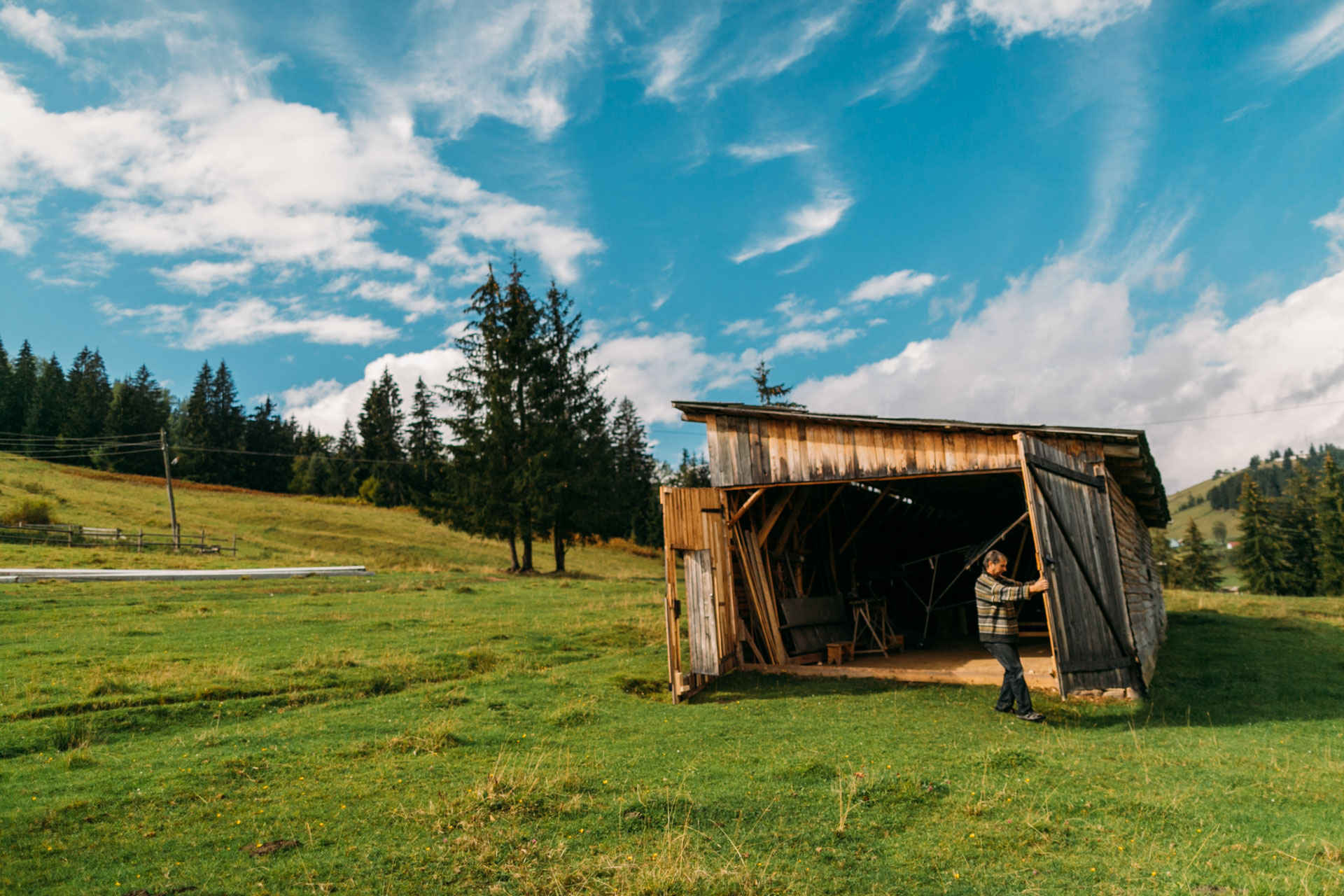
Volodymyr started by studying theory over a long period of time. Back in those days, the Internet was not in common use, so he would get information from any sources available, such as the Soviet magazines “Wings of the Homeland” and “Engineering for Youth”. Volodymyr would spend hours in the library of Ivano-Frankivsk, looking at various kinds of engines and studying different sources of power. Now he handles each ornithopter operation stage on his own and even makes calculations in his own way. The inventor admits that he used to have arguments with his maths teacher back in school:
— When I asked my teacher how to find an area, she would say, ‘use the formula’. ‘Ok,’ I would say. Then, I would take a piece of paper, close my eyes, make a random sketch and connect some lines. And I would ask her, ‘could you please calculate this area?’. She would reply, ‘that’s impossible’. ‘What do you mean impossible?’ I wondered. I would count each cell in my notebook and find an area with a 5% margin of error. So now I calculate everything in my own way. It doesn’t contradict the laws of science, but it must also be reasonable.
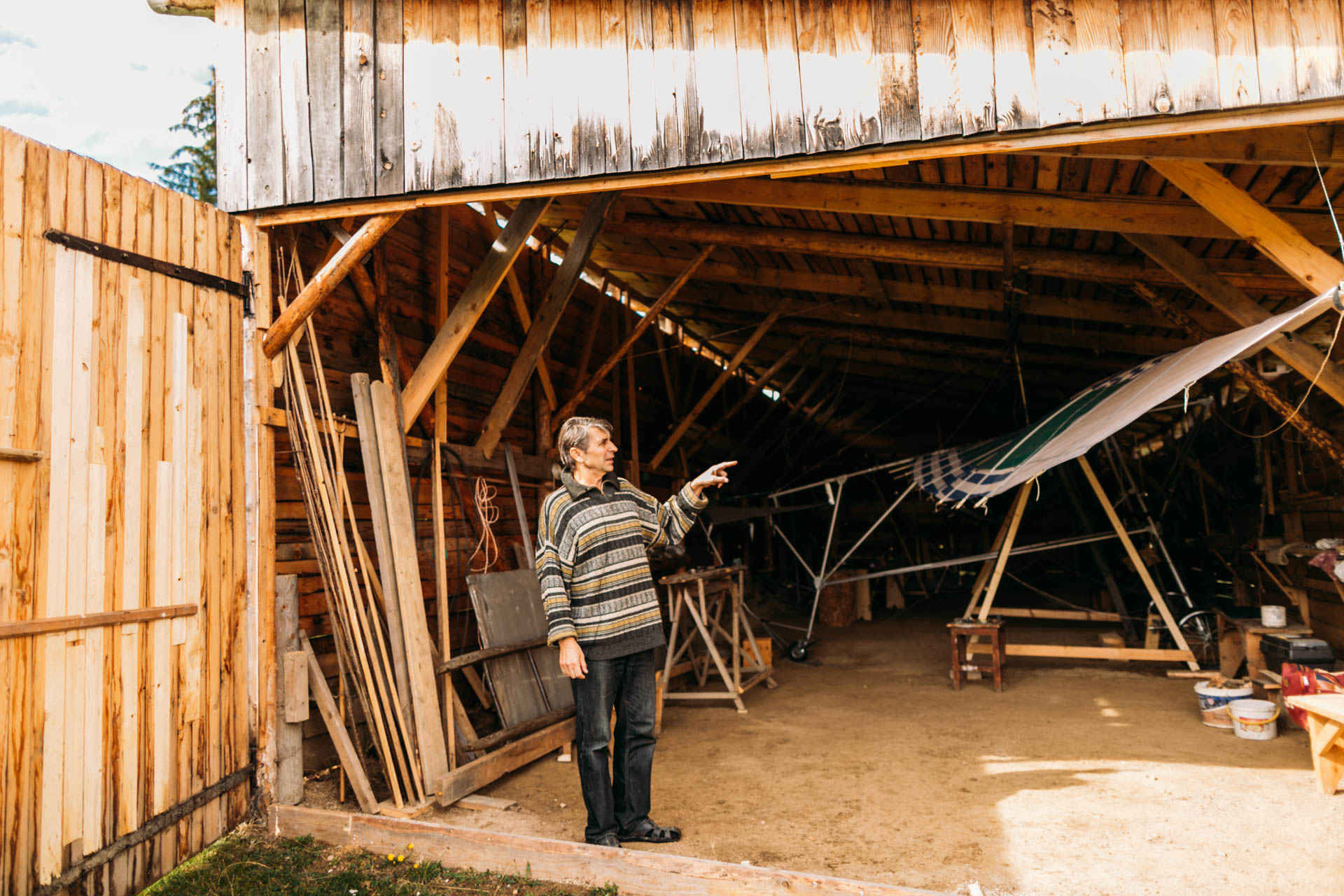
Volodymyr Yakovenko was born and grew up in Homel Oblast, Belarus. After 8th grade, he moved to Ukraine and enrolled in a vocational school, where he qualified as a carpenter. At first, he lived in Donbas, before moving to Zakarpattia, where he served in the military in the town of Khust. After that, he lived for some time in Ivano-Frankivsk and Kamianets-Podilskyi. In Iltsi, Volodymyr built a living room and a workshop for himself, as well as renting a shed for his ornithopter.
Volodymyr has had a strong interest in painting ever since kindergarten. Even without a formal education in arts, he considers painting, along with invention, to be his life’s calling:
— You can find my paintings in Kyiv, Kharkiv and other cities. I like to paint castles, valleys, canyons and waterfalls, depicting the images that come to my mind. Redrawing bores me. Sometimes, when I’m lying down, my imagination flares up, and it is as if I am a part of a living painting. I am constantly torn between painting and inventing, because all of it requires mental effort. I manage my time by working on the ornithopter during the warm seasons and painting during the cold.
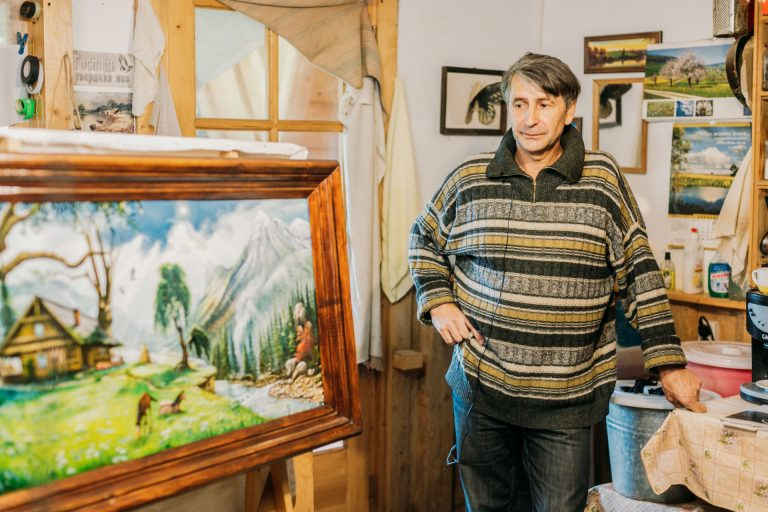
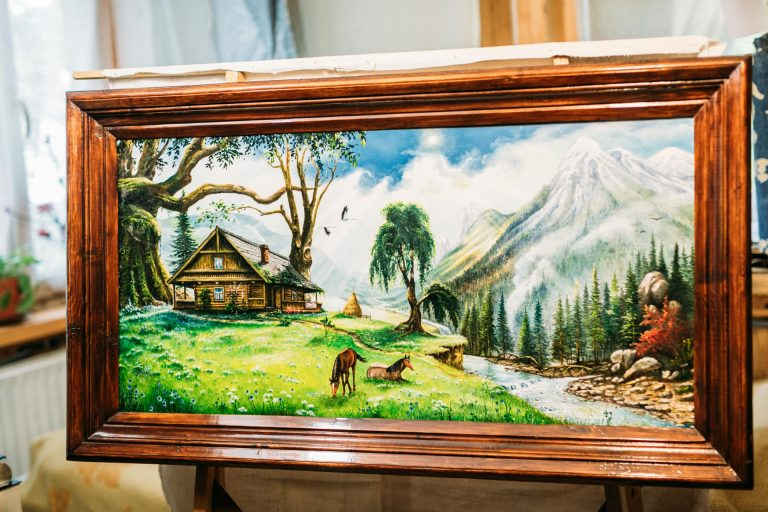
slideshow
Volodymyr completed the modelling stage of the ornithopter three or four years ago. In his years of work, he managed to create hundreds of models:
— There were times when I did not sleep at all. My summer routine was pretty much the same: shop, eat and back to work, day and night. I could make as many as seventy wings in a day. The wings were pretty simple, held together with rubber and tape.
Some fellow villagers call Volodymyr “Icarus of Verkhovyna”. In general, people are curious about his work and wonder why it takes decades to finish a project. Volodymyr has to answer this question often, which means explaining his approach to work. At first, he would run into difficulties because of the lack of knowledge and experience, but, as time went on, more and more people grasped the idea of a future ornithopter.
— An ornithopter is a ‘diehard’ of sorts. When talking about the design of a glider and a vehicle, the former is more complex. Even though a vehicle is comprised of more parts, designing an aircraft that could fly over a distance of at least ten meters is much more challenging. After all, the air is more complex and dangerous than the ground. It is unforgiving of any mistakes. That’s what makes it so much more exhilarating.
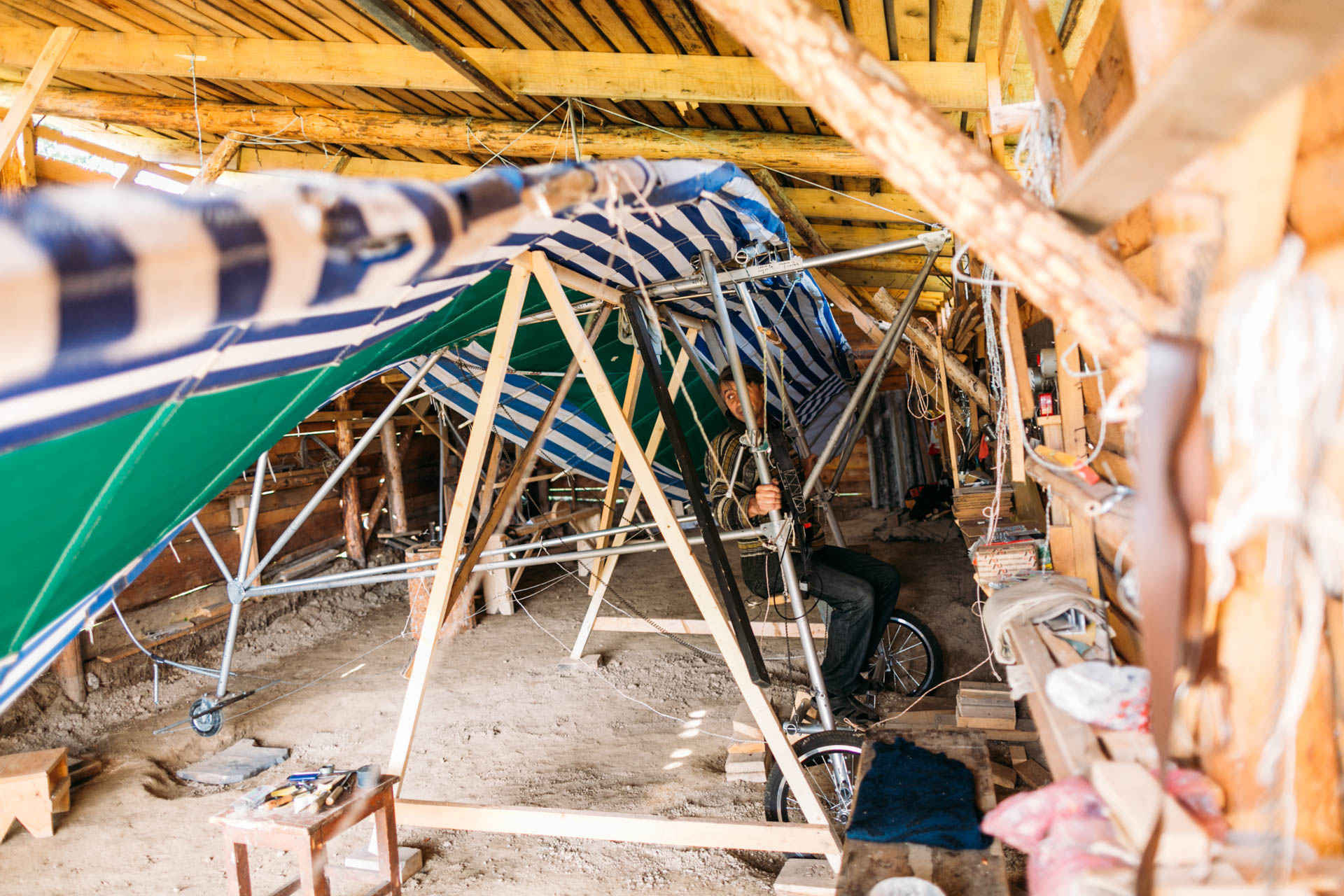
Volodymyr Yakovenko has not heard of any other inventors working on ornithopters in Ukraine. About five years ago, he was in touch with a group of Russian inventors and corresponded with the Canadians famous for the longest ornithopter flight in history. But he can no longer spare the time for communication, he admits:
— Actually, the Canadians interested me more, because they were the first to take off on an ornithopter. Their flight is considered a record to this day, but they still have to expend a lot of energy to make it fly, so it isn’t really a free flight. They proved that flight is possible, but that’s all. They replied to my letter with a brief ‘OK’. The thing is, every inventor sticks to their own approach. I don’t care who will be the first to do it. What matters is that I want people to start flying as soon as possible.
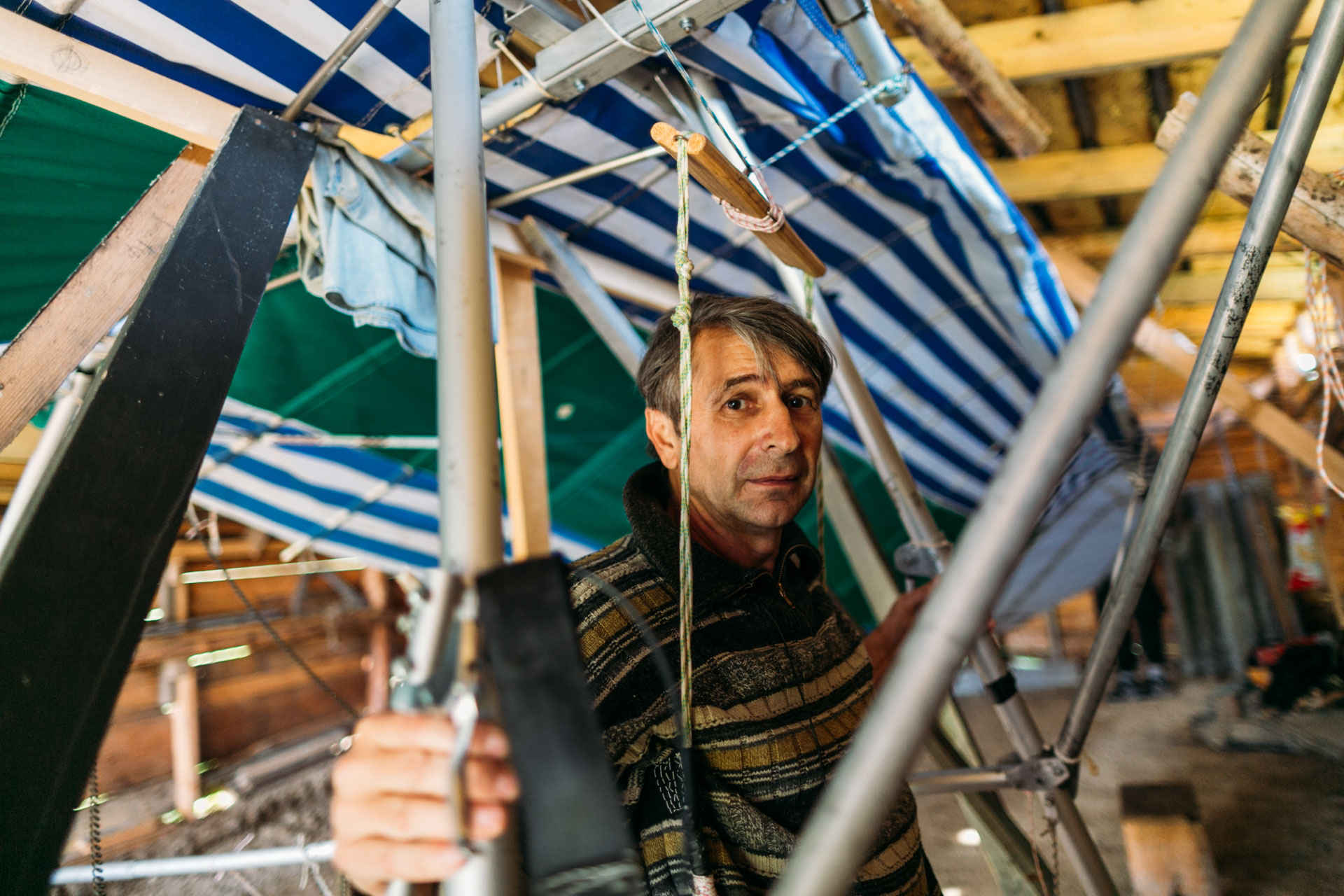
Volodymyr first tested the ornithopter about five or six years ago. In the beginning, he had problems with acceleration, and the aircraft would fly in a “figure 8” pattern. He learnt to flap the wings gradually. Considering that his first models did not have wheels, Volodymyr tried to launch the aircraft off a hill. He travelled sixty meters in six seconds. Then he climbed even higher:
— I didn’t intend to fly far. I had to feel the air and the aircraft itself. Once, I was flying and fell seven meters to the ground. A handle broke down, and I hit my face against the ground. I was wearing a helmet though, so it wasn’t a big deal. The aircraft did need repairs afterwards.
Volodymyr tries to develop a balanced system. He is committed to find a way to flap the wings:
— People usually lack the energy to lift up the wings. I have ten kilograms on each wing, which allows me to flap them effortlessly, without losing any energy. It’s my mass that matters. You don’t use the wings to push through the air but rather rest against it.
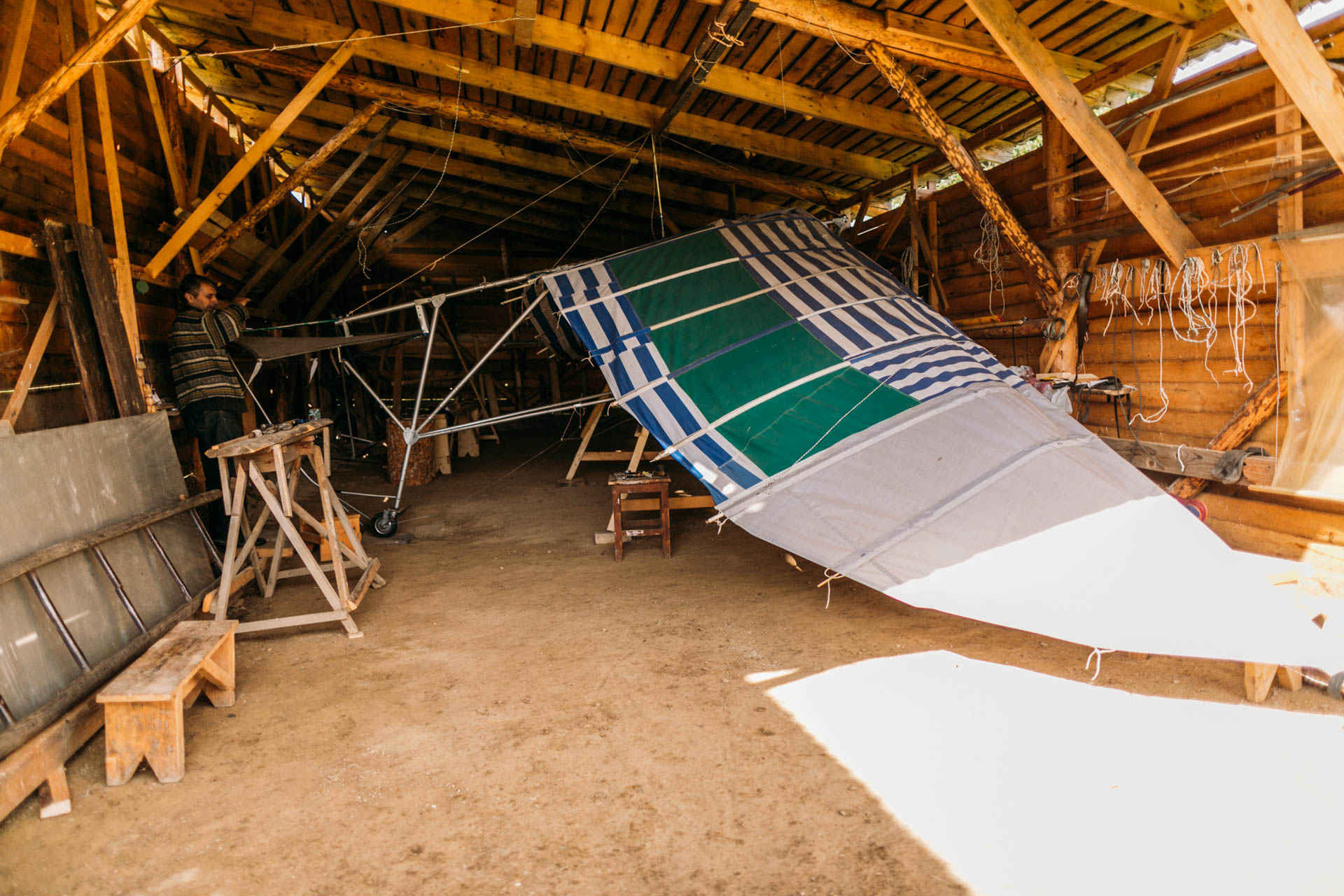
Volodymyr told us that he spent much time learning about cheap power sources that could make up for the lack of human strength. That is how he started learning about resonance — a rapid increase in the amplitude of fluctuations under the effect of an external force, when the fluctuation rate of a system matches the fluctuation rate of an external force. Galileo Galilei was the first to describe the phenomenon of resonance in 1638; he noted that ‘you can set a heavy pendulum in motion just by blowing on it and repeating the exhalations in time with the pendulum’s motion’. In his description of resonance, Galileo drew attention to the ability of a swing system to accumulate energy supplied from the external source with a particular rate:
— Resonance allows for a more efficient use of energy. It doesn’t give an ‘income’ as such, but it ensures that the energy consumption is at peak efficiency. The problem is that, according to the law of the lever, you may only gain speed at the expense of power. I made it so that the springs act as batteries. They accumulate energy from the mass of the aircraft and the human body and then give it back. Canadians tried to do something similar with elastic bands. However, you must take care to release the energy correctly and give the wings a proper flap.
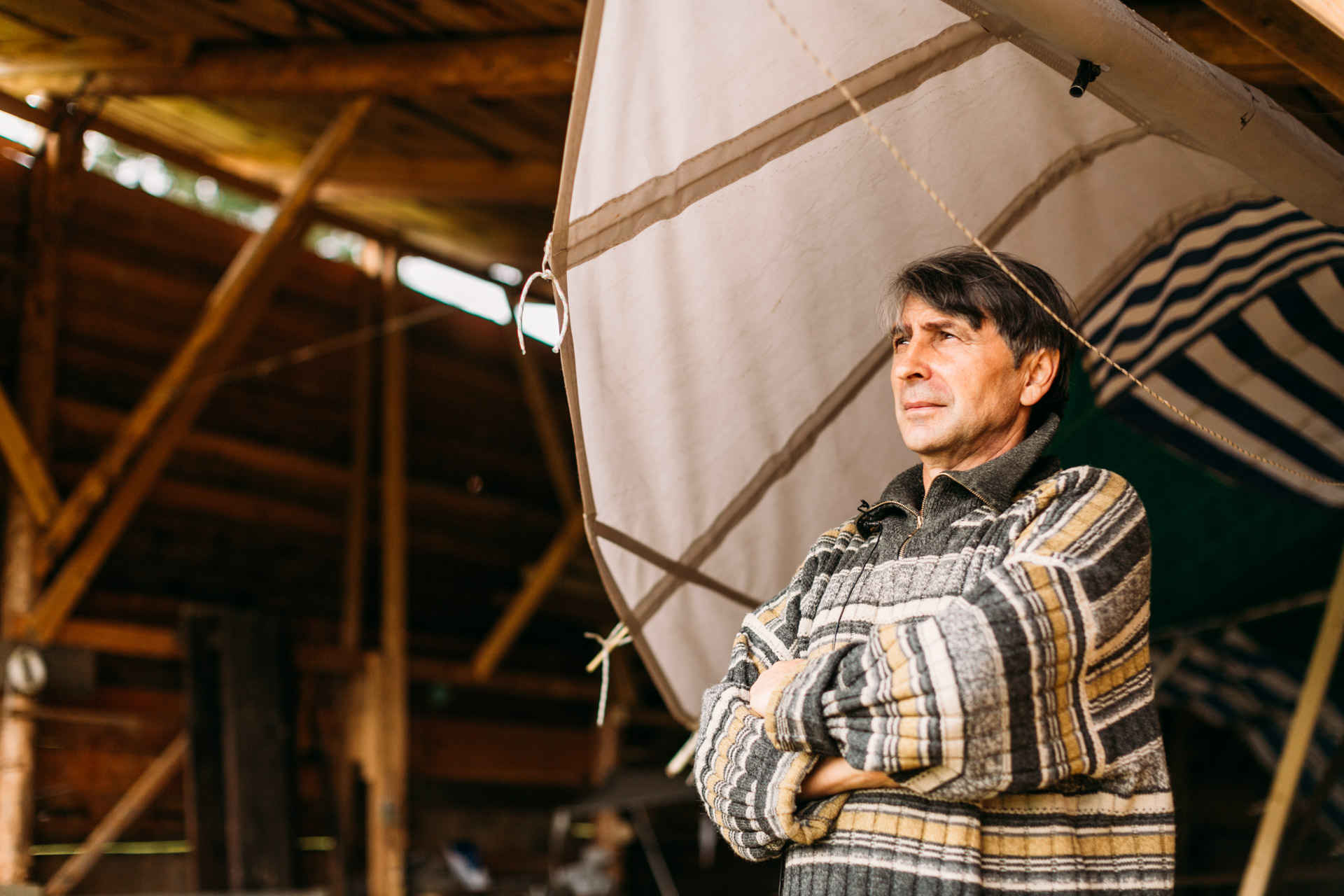
Volodymyr Yakovenko said he would have finished the ornithopter by now were it not for the lack of funding and other routine issues. He has come a long way nevertheless, and now spends more time testing and improving his invention. Once Volodymyr has finished building the ornithopter, he intends to sell it:
— I don’t have the time to either patent it or play with it. If I sell it, I will be able to afford a workshop, to hire people and enhance this device. I would like for everything to be done professionally. I do wonder why no one has held some kind of ornithopter forum yet. Seems like everything has already been invented, and here I am with my ‘diehard’ … It would have been nice to have people come from all over the world and solve this riddle.

Volodymyr admits that he likes the idea of being able to just enjoy the flight, to fly for at least half a day to a day and admire the nature:
— The ornithopter appeals to me because it lets you feel as one with the aircraft. It’s not just another inanimate object but a living thing. Besides, flying and observing the beautiful sights from above inspires me. On the ground, you are boxed in, be it a road or a house or some other obstruction. The air has none of it, and you can move in any direction.
How we shoot
ВThis video blog features our team in Iltsi and Kryvopillia where we shot the story about ornithopter.

